Aside from fantastic adventures and shore leaves, the Search and Rescue (SAR) exercise at sea is one of the best experiences a seafarer could have in his seafaring life.
In fact, this type of activity can not be done in any other transport except only for ships navigating in the high seas. SAR helicopters can’t just call a truck driver in the freeway to make a landing nor can’t they hail an airplane flying a thousand miles an hour 35,000ft into the air.
If your ship gets chosen by a Search and Rescue helicopter in a special exercise, you are one of the luckiest seamen in that vicinity. And you get experience points too if some serious things happen.
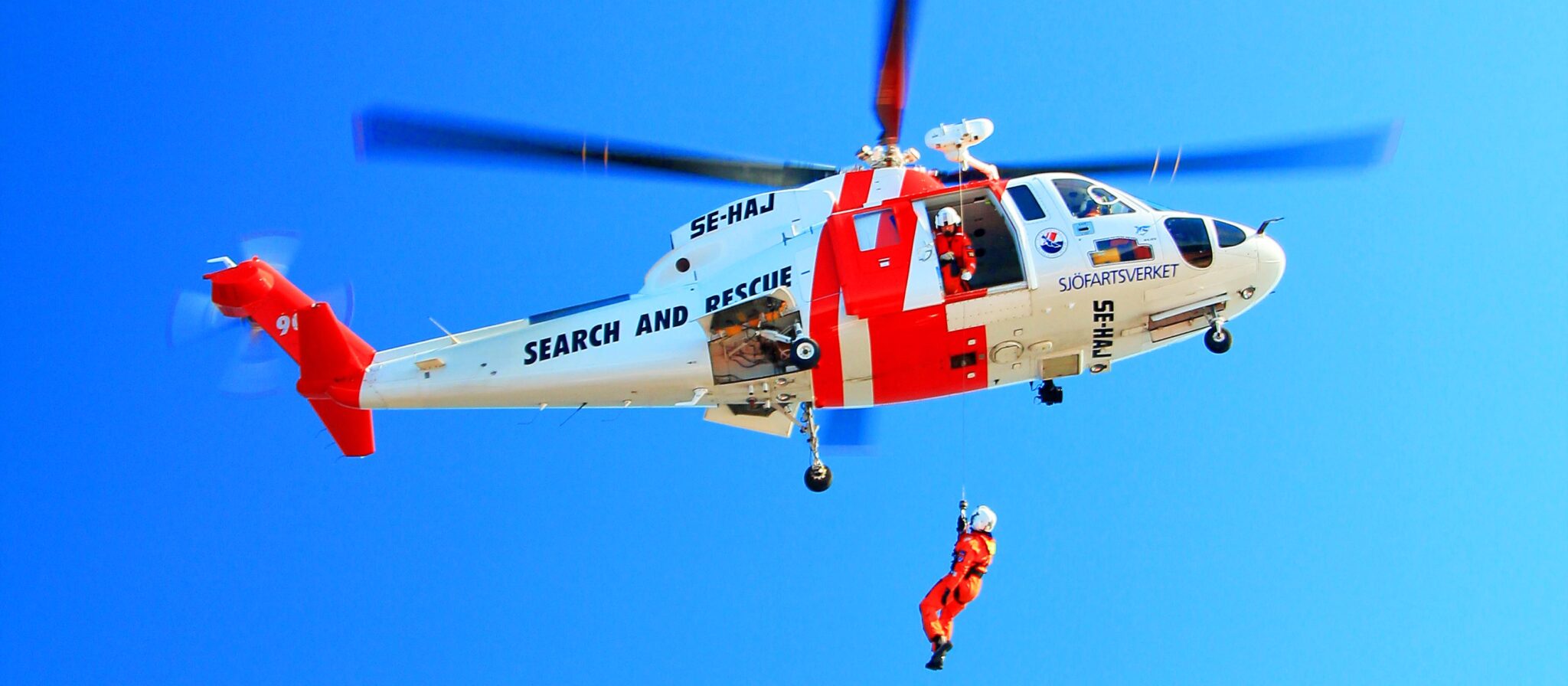
Why lucky?
Consider this. Not all maritime countries are capable of providing efficient SAR units or have the budget to conduct actual drills and exercises on a regular basis.
Then there are hundreds of ships navigating in a particular area where these search and rescue units fly and they get to pick only one vessel for that time.
So if they choose your ship for that exercise, you don’t want to waste that opportunity to make the most of it. Who knows when will be your next time!
A SAR Helicopter Surprise
It was a fine day at the Baltic with blue skies and light winds. Out of nowhere, we received a call from someone making a request for some sort of participation. His background was noisy as he spoke on the radio.
Then came a loud disturbance which troubled us. There was nothing around except the normal light traffic with the warm summer sunshine encompassing everything that it touched.
We went outside directing our vision behind and above the ship. Lo and behold! A SAR helicopter was hovering a few meters abaft our beam.
Since the sea was calm with plenty of water around, the Captain switched our radar to standby mode. It was exciting seeing a rescue helicopter up close with real live persons in it making their moves which were so cool to watch.
A Rescue Officer came out of the helicopter complete with gears. He attached his body to a winch, slowly lowered himself a few feet, and let the chopper hover closer to the bridge wing while we kept our course and speed. Everything was done in precision.
The wind started to go crazy as they approached us. Suddenly, the bridge was full of people and everyone wanted to take a peek at this awesome feat! Even the engineers were there too!
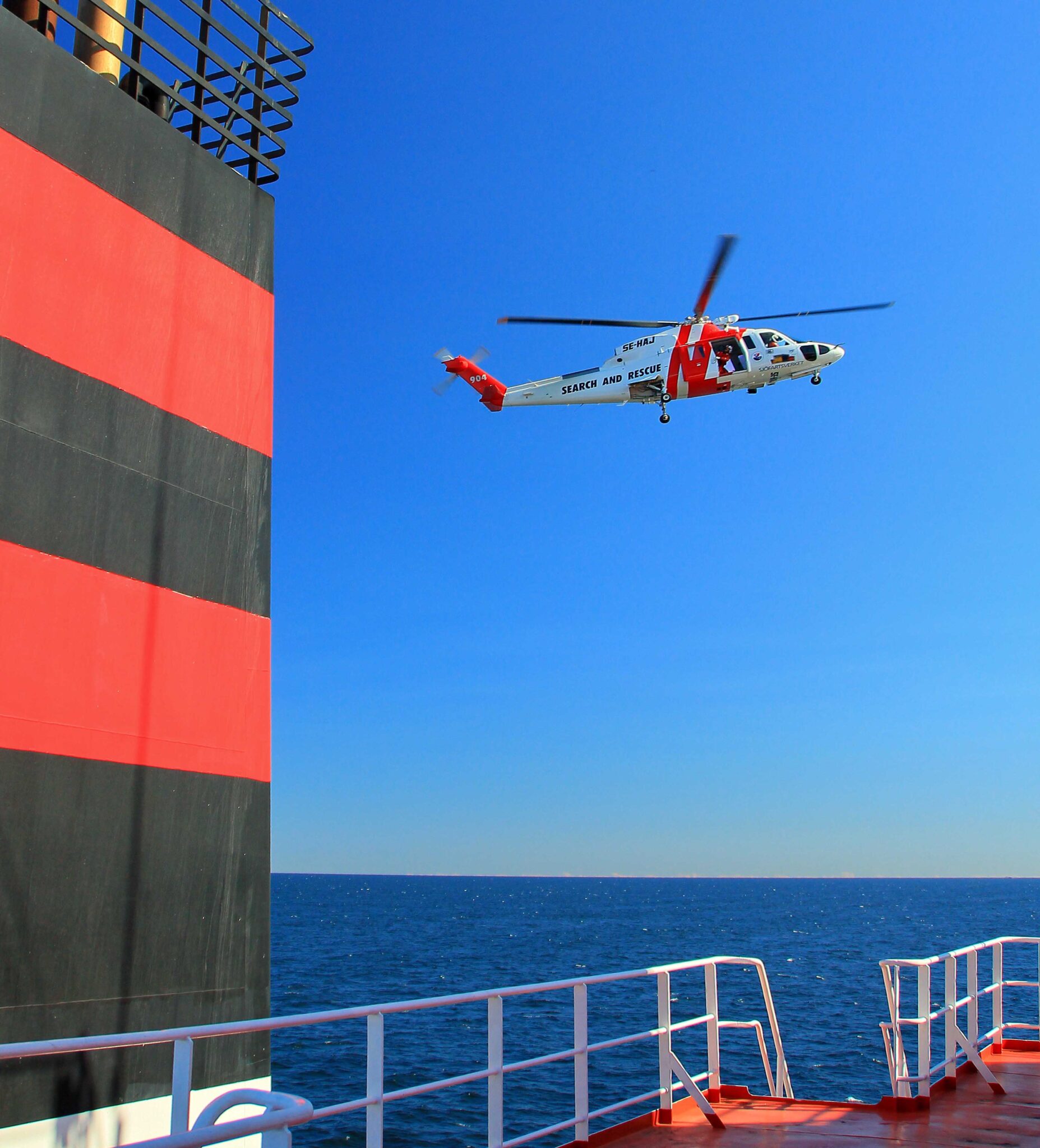
Rescuer Touch Down
The Rescue Officer made a touchdown on the starboard bridge wing. Our captain approached him and they shook hands. He was the only person to go near him.
Others were just watching while a handful took pictures. This was the era where digital cameras ruled our planet.
A few minutes passed by and it was all over. After that snappy salute and warm handshakes, the Rescue Officer winched himself up. They slowly hovered away until they disappeared from our sight.
The SAR helicopter called to give us an honorable “Thank You” and we continued our voyage. Everything slowly went back to normal.
More SAR Encounters
My first encounter happened when I was still a cadet. It was so cool observing such an event unfolding while you were in the front-row seat. But it did not end there.
On my next vessels, I continue to experience more while working on deck. They just came out of nowhere and all we notice first is the sound of the helicopter engine, which sometimes can be mistaken like something crashing down, if you are unaware.
Swedish Search and Rescue helicopters are often involved in this exercise. If you are in the Baltic close to Swedish territorial waters, you might be chosen to participate in this event, especially during summertime.
The best thing to do is to drop everything that you’re doing and watch. Nobody will notice that you stopped working because even the Captain and the Chiefs could be there watching.
In some cases, you can take out your camera and film the whole thing (just as I did). Everything could happen really fast and the awe-excitement is unparalleled.
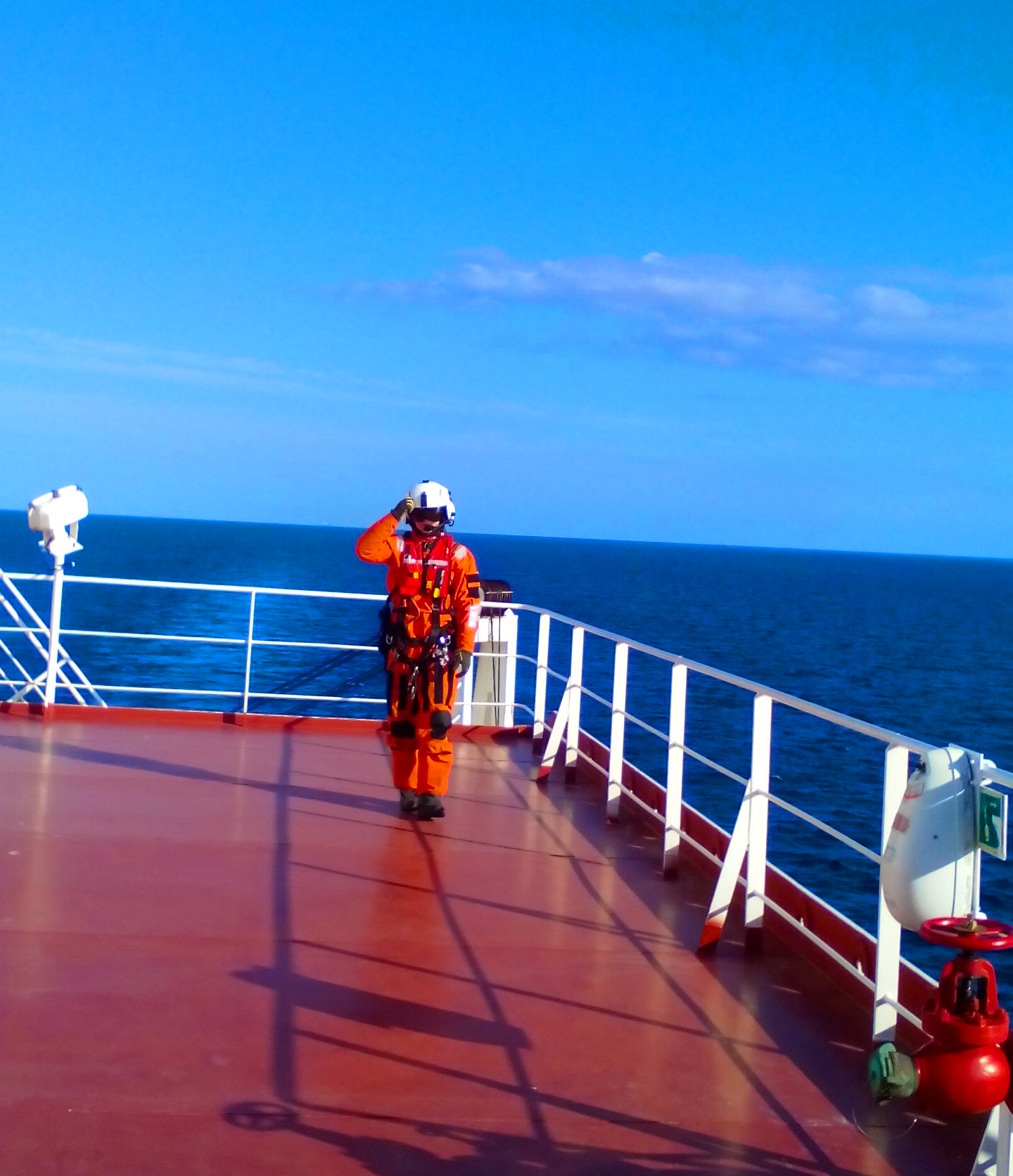
Even During the Night
Most of these exercises happen during the day when everything is clear and visible. But in reality, search and rescue efforts are made at any time and in any season, even during the worst weather.
That’s why when we were somewhere in the Irish waters, a SAR helicopter approached us requesting participation in their exercise. It was a bit cold during that time but we still gave them our go signal.
Seafarers always feel honored to be chosen at such kind of request.
While observing how these guys do their stuff, I began to wonder that Maritime Search and Rescue volunteers in helicopters could be the best job out there.
You know the feeling when these guys rappel on your ships, right? It’s just so badass that it stirs something inside of you. Others watching may seem like it’s just a normal day but believe me, everyone has a story to tell especially during Saturday nights.
SAR Exercise Hotspots
In my career as a seaman, there were only a few places in the world where I met them at sea. I’ve never been involved in actual search and rescue efforts but being always prepared is a plus on your confidence and ability.
Swedish Search and Rescue
My number one SAR Exercise hotspot would be the Baltic Sea close to Swedish waters. I experienced 8 times in that area since I started my career in 2009 the last being in 2019.
Most of the time, they send a person down either on our bridge wing, the poop deck, or near the manifold. I am always in a tanker ship so these areas are the most favorable spot for rappelling a person.
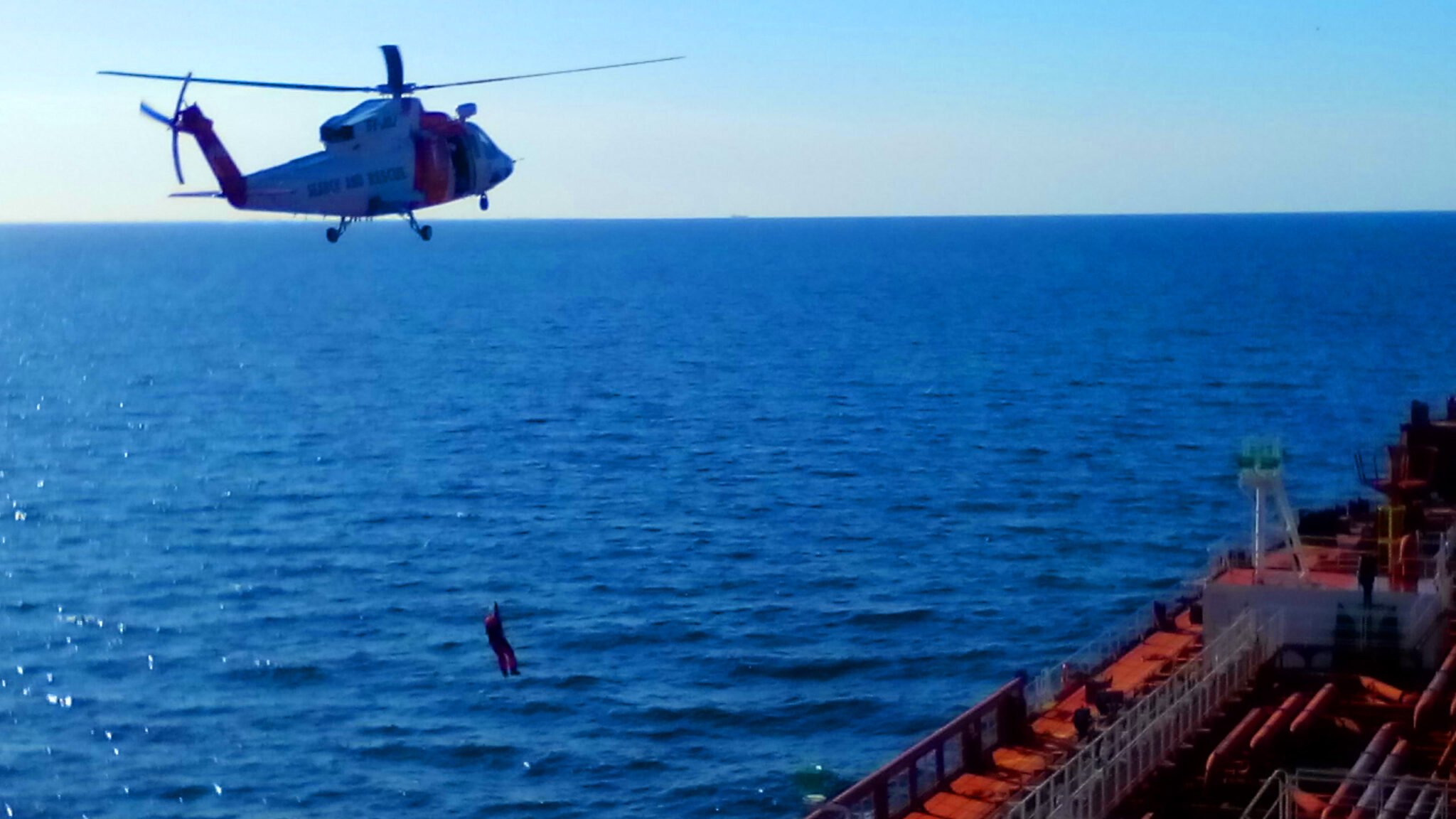
Swedish SAR helicopters are very identifiable- with red and white paint around the chopper’s body the tail being painted red. Their crew wears a highly visible international orange protective suit and white helmet.
Irish Evening Surprise
Ireland also conducts Search and Rescue Exercises involving ships navigating in their territorial waters. But this is not as frequently as I experienced like those of the two places above.
They usually conduct this kind of operation during the night which is also told by some of my friends and crewmates. I don’t know why but maybe they like doing this with a little bit of truth and challenge.
Their SAR helicopter is small and versatile- good for quick response with supreme maneuverability. When they conducted an exercise with us, I was not able to take a closer look since they were on the forward part of the vessel.
It was also a bit dark and I was on a tanker ship which prohibits electronics on deck.
Portuguese Navy Helicopter
Off the coast of Portugal is also very active in training their search and rescue units at sea. I had a nice front-seat experience with them during their exercise last year and just this August. But theirs is a bit different and much more badass or “astig” than other places.
Instead of the regular Coast Guard volunteers with high visibility suits, the Portuguese trained their navy to be in charge of search and rescue.
You can see from their helicopter alone that this flying machine and her crew are capable of saving lives as well as going into war.
By the looks of it, the chopper’s body is thick and sturdy, enough to withstand bullets flying around. The body color is camouflaged. Even the crew were wearing their navy t-shirt.
But on that day, they were not designated to withstand any firepower nor show some force. They were there to conduct a search and rescue exercise at sea. And we were glad to be a part of them.
I think they have this kind of routine every year which mostly happens from July to September. Last 2017, we also conducted the same exercise with them which happened in August.
It was very cool that everybody stopped their work and watched the navy officer descend on our poop deck with a stretcher. I also got to see a closer look at their navy chopper.
This year was a bit more surprising. I was chipping forward when suddenly, a navy helicopter appeared from behind the ship’s funnel and hovered on our port quarter.
I was hesitant to go there at first but when I saw people flocking, I hurriedly went to the scene nearly running. To my surprise, everyone was in shambles because of the noise it created.
Some Engineers thought that the air-conditioning plant was exploding. The noise was like chaos but when they saw the helicopter, it was a relief.
Timing is Everything
The timing could have been perfect. My phone was in my locker which was located in the port quarter of our ship too. I took photos and videos nearby.
Most of the deck crew was there and it was quite a surprise that I was the only one capturing the moments. Then I remembered, I was the only millennial in that group! Hahah.
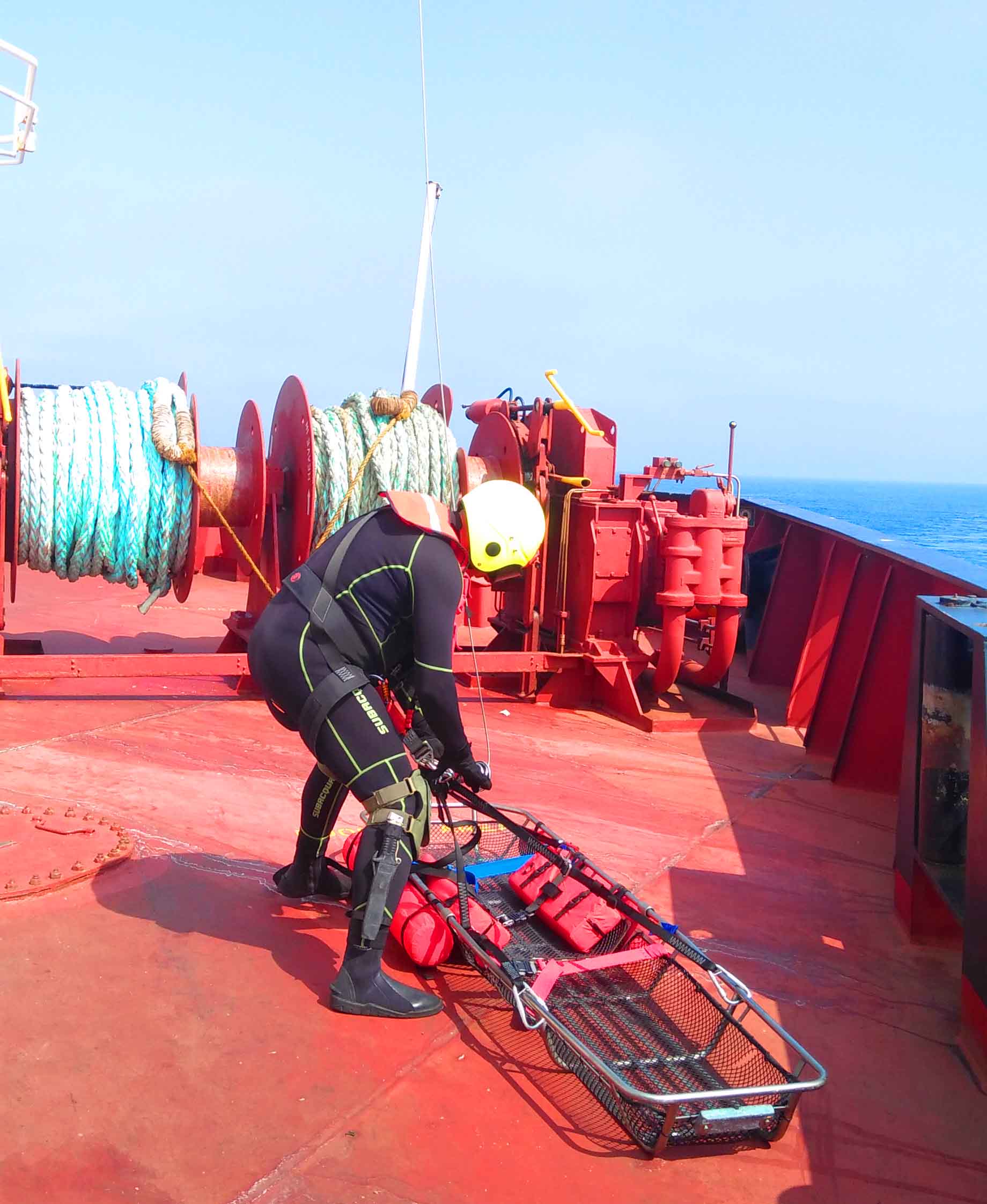
Compared to the previous search and rescue exercises that I experienced, this one was far more different and cool. Three navy officers rappelled and made a touchdown on our poop deck.
One with a simple harness, another bringing a rescue stretcher, and the last one descending solo using his arms and legs to keep him from turning. It lasted for about twenty minutes.
Next time you pass by these waters, recharge your gadgets and leave a message to the on-duty watchman to call you if something interesting starts to happen.
And when you experience this kind of scenario on board, be a good seaman and make the most of it.
Final Thoughts
On a serious note, we participate in SAR exercises just like these to be prepared when the worst comes. It’s not only when the whole ship is in distress but also during a situation when one person is badly injured and needs immediate on-shore medical assistance. It’s all about saving lives.
These guys could help us define the fine line between life and death.
May the winds be in your favor.

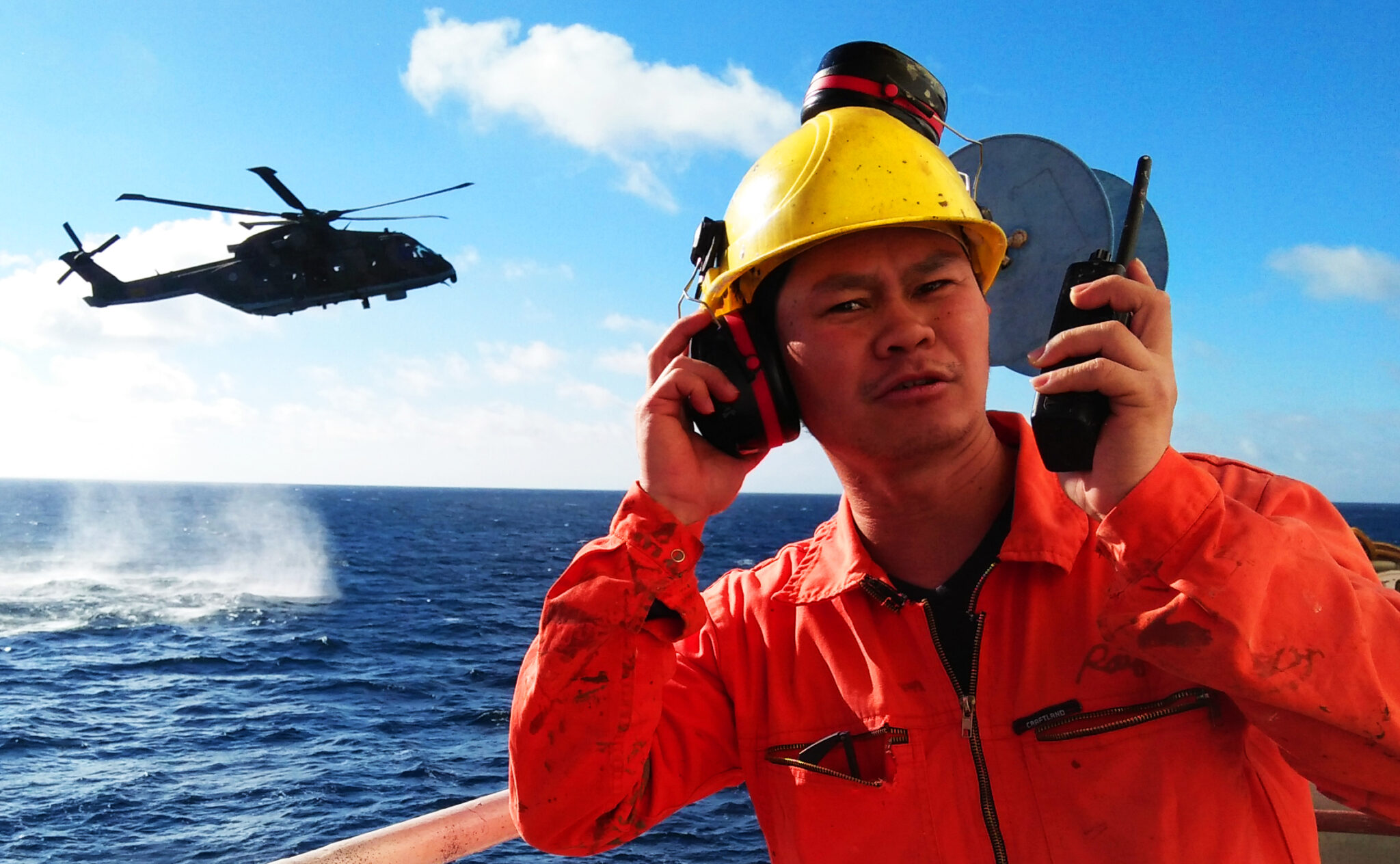
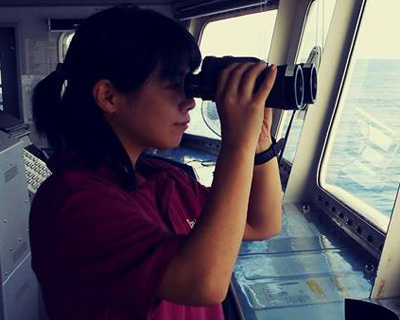
0 Comments